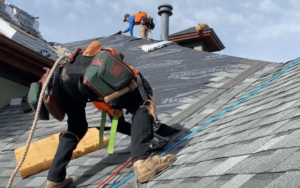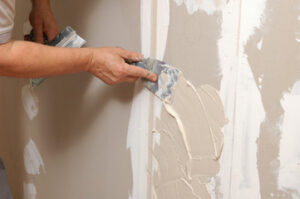Treatments boca Dental And Braces can enhance your appearance and boost your confidence. They also help you avoid discomfort caused by crooked, cracked, or discolored teeth.
A captivating smile makes a powerful first impression in personal interactions and job interviews. It can even increase your willingness to take risks and seize opportunities that come your way.

Veneers
When it comes to concealing flaws such as chips, cracks, discoloration, gaps, or misshapen teeth, veneers are among the most effective cosmetic dental procedures. These thin ceramic shells are bonded to the front of your teeth. They offer similar luster and translucence as natural tooth enamel, making them blend in with your smile seamlessly.
Veneers can be made of a variety of materials, though composite resin is the most common. Your dentist sculpts and applies them in a single session. They are reversible, meaning you can take them out at any time if you want. They do not require the same level of maintenance as other treatments, but you will need to follow good oral hygiene practices, including brushing and flossing regularly. You should also avoid chewing on hard objects, and avoid using your teeth to open packaging or cut items. You may notice some rough patches in the first few days after getting veneers, but these will improve over time. If they do not, your dentist can smooth the veneers.
During your initial visit, the dentist will discuss your cosmetic goals and answer any questions you may have about the procedure. They will then examine your teeth and gums to determine if you are a suitable candidate for veneers. If you are, they will prep the selected teeth by removing a very thin layer of enamel (less than the thickness of a fingernail). A temporary restoration is placed while the permanent veneers are fabricated in a lab.
At your next appointment, the dentist will remove the temporary restoration and place the permanent veneers, ensuring they fit perfectly and are color-matched to your surrounding teeth. They will bond the veneers to your teeth and cure them with a special light beam. They will ask you to return for a follow-up visit in a few weeks to monitor how your teeth adjust to the veneers and make any necessary adjustments. With proper care, your new veneers can last 10-15 years. However, they are not as stain-resistant as your natural teeth, so it is important to limit exposure to coffee, tea, red wine, and tobacco.
Bonding
If you’re looking to give your smile a little cosmetic touch-up, it may be time to visit the cosmetic dentist. But how do they differ from a traditional dentist, and what can they do to make your smile more attractive?
A cosmetic dentist can help you hide stains and improve the overall appearance of your teeth. They can also help you fix crooked or misshapen teeth and correct other dental issues. While these procedures can be more expensive than other treatments, they can save you money in the long run by preventing more costly problems down the road.
Most people have some minor dental flaws that they want to correct. A common issue is tooth discoloration, which can occur due to a variety of reasons. Other issues include crooked or misshaped teeth, chips, and cracks. Some people are even unhappy with their gum line or the shape of their lips. While these issues can cause discomfort, they can also affect your self-esteem. A cosmetic dentist can help you address all of these issues, and they can do so in a less-invasive way than other types of treatment.
While traditional dentists focus on oral health, cosmetic dentists are trained to make your teeth look healthier and more appealing. They can perform a variety of cosmetic procedures, including veneers and bonding.
When it comes to repairing cosmetic dental issues, dental bonding is a quick and affordable option. The procedure involves applying a tooth-colored resin to your teeth and then curing it with a special light. This material can fill in small chips and cracks, close gaps, and change the shape or color of your teeth.
To prepare for a dental bonding appointment, it’s important to brush and floss thoroughly before seeing your cosmetic dentist. This will ensure that your teeth are clean, which will allow the cosmetic dentist to work with a clean canvas. You’ll also want to discuss your goals for your smile with the dentist before undergoing any treatment. This will allow them to create a plan that will achieve your desired results.
Teeth Whitening
A radiant smile is a sign of good health and is essential for both your emotional and physical well-being. If you are not satisfied with the appearance of your teeth, cosmetic dentistry may be able to help. From teeth whitening and bonding to veneers, tooth and gum contouring, dental implants, and more, cosmetic dentists offer a range of treatments to give you the perfect smile you deserve.
While a general dentist offers preventative care, like teeth cleanings dental fillings, and restorative procedures to repair damaged or diseased teeth, they are not trained in the art of enhancing your smile. In contrast, a cosmetic dentist has completed advanced training and is skilled in restoring the appearance of your smile as well as improving its function.
Teeth whitening is one of the most popular cosmetic dental treatments available and a cost-effective way to improve the look of your smile. It is also safe and quick, typically taking less than an hour. The procedure is performed with a bleaching agent, usually hydrogen peroxide, and is applied to your teeth via trays or gel.
Another option is porcelain veneers, which are thin and strong shells that cover the front of your teeth to hide several cosmetic flaws. These include chipped or cracked teeth, discoloration, minor gaps, and more. Veneers can be a permanent solution, but they need to be replaced periodically.
A third cosmetic treatment is composite bonding, which uses a tooth-colored resin to enhance your smile. It can be used to close gaps, repair chipped or broken teeth, change the shape of a tooth, or replace old silver fillings. Bonding is a non-invasive treatment that can be done in a single appointment, and it is a more cost-effective alternative to porcelain veneers.
A beautiful smile can have many benefits, including a boost in confidence and improved opportunities at work and socially. In addition, it can increase your attractiveness to the opposite sex and make you appear healthier and happier. However, the benefits of cosmetic dentistry are only fully realized when you visit a trusted and experienced cosmetic dentist. By following their instructions, you can ensure that your new smile lasts for years to come.
Dental Implants
If you’re dissatisfied with your smile, cosmetic dentistry can help. Cosmetic treatments can improve dental aesthetics, including color, shape, size, alignment, and the gum line of your teeth and bite. They don’t repair or treat disease; they enhance the look of your natural smile. A cosmetic dentist can provide a wide range of treatments, from simple to complex.
Teeth whitening, veneers, and dental implants are some of the most common cosmetic treatments. Unlike dentures, which must be removed at night and are not always comfortable for eating, dental implants look, feel, and function like your natural teeth. These durable, tooth-colored restorations are crafted from porcelain, which has a strong resemblance to natural tooth enamel and reflects light like it. They also blend in with your other teeth and can improve the appearance of crooked or misaligned teeth.
Dental veneers are paper-thin, custom-made porcelain laminates that bond to the front of your teeth. They can close gaps, reshape misshapen or slightly crooked teeth make minor corrections in alignment, and give you a whiter, brighter smile. Because they are so durable, they should last for years and resist staining, allowing you to enjoy your enhanced smile without the need for frequent touch-ups.
Tooth-colored fillings (inlays and onlays) are a cosmetic alternative to silver amalgam fillings. These fillings are created in a dental laboratory and bonded to the surface of your teeth. They can fill decayed or damaged teeth while preserving more of the tooth’s natural surface than traditional fillings.
If you have a missing tooth or several missing teeth, dental implants can restore your confidence and the structure of your mouth. An implant consists of a titanium screw that is inserted into the jaw bone where a lost tooth once stood. A replacement tooth is then attached to the post. Over time, the implant and your natural teeth will fuse.
Although the term “cosmetic dentistry” is not technically accurate, it describes the treatments that we use to enhance the look of your smile and are typically not considered restorative. Some examples include dental crowns, bridges, and dental implants. When combined with restorative procedures, such as teeth whitening or braces, these cosmetic options can create a healthier, more beautiful smile.








